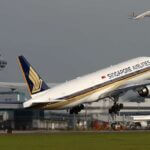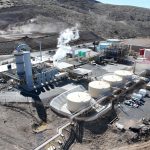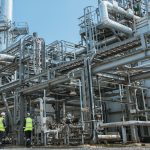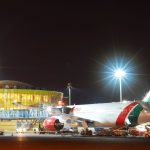The federal government’s renewable fuel initiative – the latest in a string of such moves across the Asia-Pacific region – was quickly welcomed by stakeholders including the nation’s largest airline group, Qantas, global aircraft manufacturer Airbus, emerging renewable fuels company Jet Zero, US-based renewable fuels producer LanzaJet, and the Low Carbon Fuels Alliance of Australia and New Zealand (LCFAANZ), which represents some 300 stakeholders advocating for new fuels.
They are now collectively urging Australia to take the additional step of mandating SAF blending to rapidly help build demand in the airline sector while also helping driving down the costs of the fuels.
“Making cleaner fuels here, from Australian feedstocks, creates the path for emissions reduction in sectors that are hardest to clean up, like plane travel and construction machines,” said Chris Bowen, Australia’s Minister for Climate Change and Energy.
“Across the nation, we have 2 billion litres worth of projects in the pipeline, many of which are ready to scale up production. A thriving new domestic industry with more jobs in our regions, from farmers growing inputs to workers refining the fuels for the future, is within our reach.”
The A$1.1 billion incentive for low carbon liquid fuel production is on top of a A$250 million (US$167 million) budget already allocated by the government for research into and development of the new fuels as part of the Future Made in Australia Innovation Fund.
Eligibility for funding through the latest programme will be determined following public consultation and design work to be undertaken by 30 June 2026, when the Australian financial year ends. Grants will be allocated through a competitive process which includes not just new fuel development but also community benefits.
“This investment changes the game for Australia’s homegrown low carbon fuel industry and our energy security,” said Shahana McKenzie, CEO of Bioenergy Australia and founder of the LCFAANZ. “It sends a clear signal to global investors that Australia is open for business in the development and deployment of low carbon fuels.
“For industry, this is more than a funding announcement. It is a turning point. It gives companies the confidence to invest, innovate and build here in Australia, using our enormous feedstock potential to build a clean energy future.
“With demand for low carbon liquid fuels rising both at home and abroad, this investment positions Australia to play a leading role in meeting that need.”
One of the biggest potential winners from the programme is Jet Zero, an evolving Australian producer of SAF, which has three projects in development in the north-east state of Queensland: Project Ulysses, which will use the alcohol-to-jet pathway to create ethanol from sugar cane waste for reprocessing into SAF; Project Mandala, a HEFA-pathway SAF project; and Project Silvo Plus, which is trialling the cultivation of two novel fuel feedstocks, pongamia and agave.
The most advanced of these ventures, Project Ulysses, is being developed to produce 113 million litres of SAF and renewable diesel per year from 2028, with construction of a dedicated production plant near the north-east coastal city of Townsville targeted to begin next year.
Among the key partners in this project are the nation’s largest airline group, Qantas, the aerospace giant Airbus, and US-based renewable fuels producer LanzaJet, whose technology will be used to convert sugar cane waste to ethanol .
“We welcome the government engaging in an industry consultation process to determine how the scheme should be implemented, and hope this can be done quickly,” said Stephen Forshaw, Airbus Chief Representative for Australia, New Zealand and the Pacific. “We think SAF before 2029 is achievable, indeed needed, with the right will and sense of urgency.
“We know Australia has the feedstock. The industry has been waiting for the right policy signals from government. We now want to accompany the very significant supply-side support with the right demand drivers, such as introduction of a usage mandate for Australian-produced SAF to create a viable and lasting market.”
Fiona Messent, Chief Sustainability Officer for Qantas, also welcomed the government’s initiative as one that would benefit not just the air transport sector, but also regional economies and national fuel security.
“Qantas invests in a number of local SAF initiatives and projects, enabled by our A$400 million (US$267 million) Climate Fund,” said Messent, “with this announcement another step towards establishing a thriving SAF industry in Australia and seizing Australia’s unique low-carbon liquid fuels opportunity.”
LanzaJet CEO Jimmy Samartzis said his company had been part of Jet Zero’s Project Ulysses with the founding partners since the beginning.
The Australian government’s new renewable fuels incentive programme was “leadership in action,” he said. “It sets a powerful example for how governments, investors and innovators can work hand-in-hand to accelerate sustainable aviation fuel, unlock economic opportunity and deliver a cleaner, more secure energy future. Together, we’re demonstrating how innovation, policy and industry collaboration can turn ambition into reality.”
Coinciding with the programme to drive renewable fuel production in Australia, Singapore-based FlyORO announced its first placement in the country of an AlphaLite SAF blending module, which has just been delivered to the Wellcamp SAF Blending Terminal in south-east Queensland.
The module is a portable unit, housed in a 12-metre box similar to a shipping container, which enables neat SAF produced through any ASTM D7566-compliant pathway to be mixed with Jet A1 fuel at any location, minimising the time and distance between blending and delivery to aircraft.
FlyORO, whose financial backers include Australian venture capital partners Investible and Giant Leap, claimed the AlphaLite unit could deliver up to 2.16 million litres of blended SAF per day at or near locations where the fuel is to be used.
The first module in Australia is located adjacent to Toowoomba Wellcamp Airport, which can handle aircraft up to and including Boeing 747-8 freighters.
The unit is now being commissioned ahead of planned activation this month, enabling both locally-based Wagner Sustainable Fuels and Wellcamp Airport to offer not only a consistent supply of blended SAF but final product developed quickly at any approved blending ratio.
“Australia has been identified as a strategic market in FlyORO’s broader global roadmap, with a national push toward decarbonisation and increased SAF demand aligning with FlyORO’s mission,” the company said.
“Backed by local stakeholders, FlyORO is actively working to support Australia’s emergence as an early adopter of modular SAF blending infrastructure, helping airports across the country become SAF-ready with minimal disruption.”
Photo: Qantas

Tony Harrington
Correspondent















More News & Features
News Roundup October 2025
XCF plans three new Australian SAF plants, while Wagner and FlyOro activate blending facility
UK government starts new consultation on SAF revenue certainty mechanism
African Development Bank and Japanese industrialist unite to explore SAF production in Africa
Cirium analysis challenges assumptions between aviation growth and environmental impact
LanzaJet and KMG agree to progress SAF production project in Kazakhstan